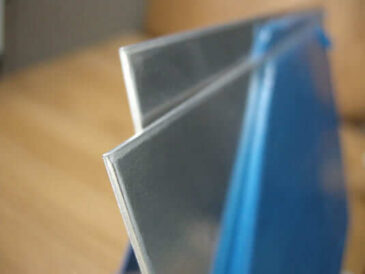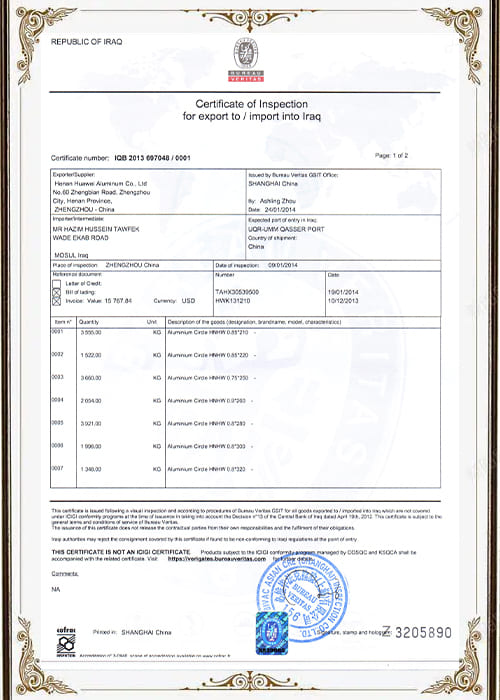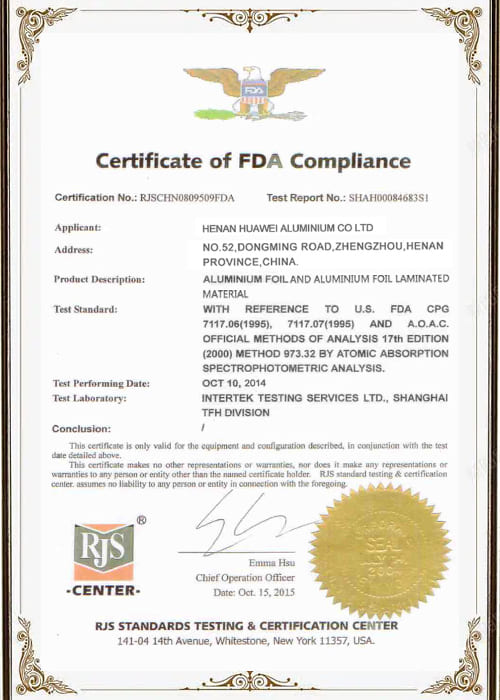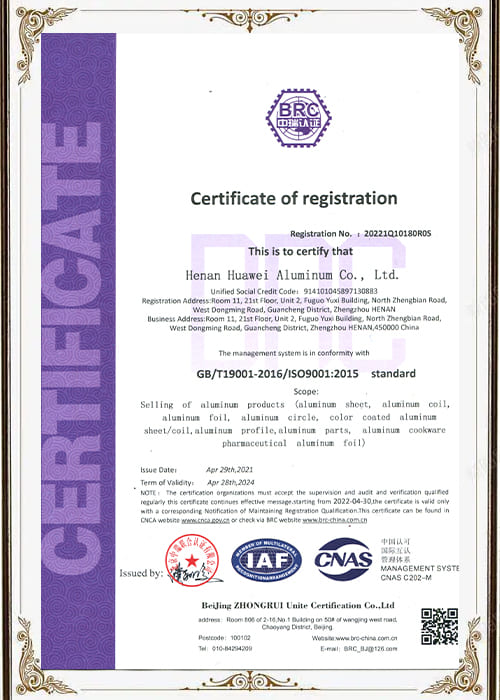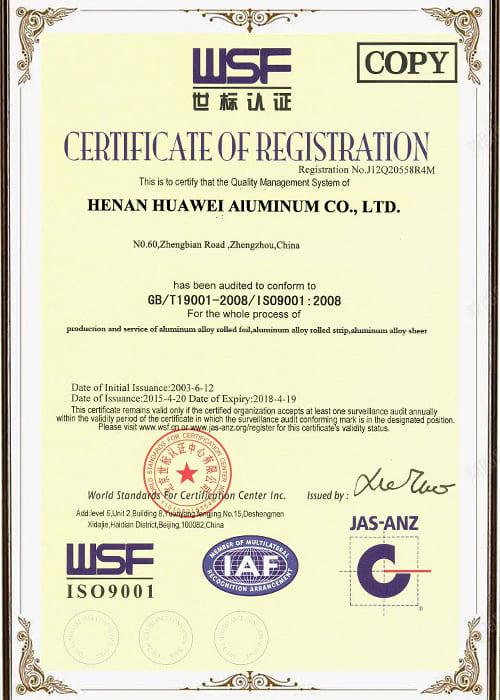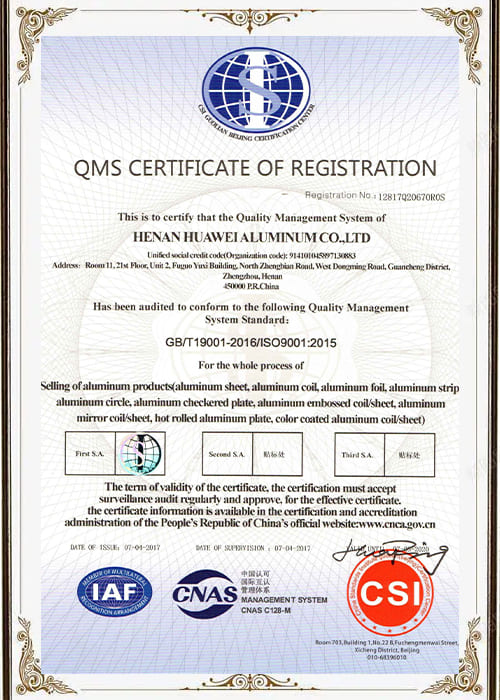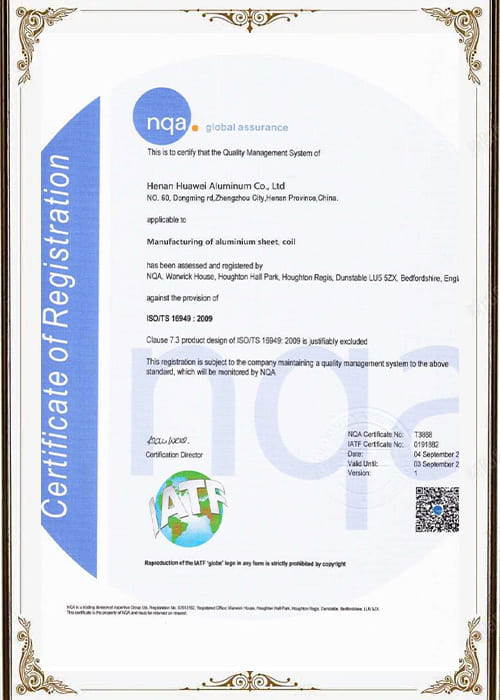5083 aluminum plate for LNG tanks
16,755 Näkymät 2024-09-23 05:58:00
Hot rolling process of 5083 aluminum plate for LNG tanks
5083 aluminum plate is widely used in LNG tank ceiling structure due to its good low temperature resistance, kevyt paino, high toughness and high strength. The main function of the ceiling structure is to support the insulation system in the tank, form a closed space in the inner tank, control the BOG evaporation gas volume in the inner tank through the insulation system, and avoid the occurrence of tank top load caused by low temperature icing.

LNG tank build by 5083 alumiinilevy
Tällä hetkellä, in the design of domestic LNG tanks, the ceiling plate structure material is generally 5083 alumiinilevy, and the ceiling tie rod is made of stainless steel. The outermost edge of the ceiling structure adopts a sealed sealing plate structure to ensure that the cold insulation material (perlite powder) is separated from the inner tank. Samalla tavalla, a baffle is set at the outermost tie rod to prevent the outer cold insulation material (perlite powder) from being squeezed and moved to the ceiling over time, thereby causing the risk of damage to the ceiling. 1/2 section of the ceiling structure of a large LNG storage tank.
5083 aluminum plate hot rolling production line
Comprehensively analyzing the design characteristics of domestic LNG projects, the implementation standard of LNG tank ceiling aluminum plate is EN AW-5083 grade O in EN 485 tai 5083 type O in standard ASTM B-209M. Tällä hetkellä, all large-scale aluminum plants in China can produce it, and there is no market monopoly. The bidding and bidding can be fully utilized to select manufacturers. Tällä hetkellä, the most advanced hot rolling billet supply scheme for domestic production of 5083 aluminum plate for LNG tanks is the configuration of hot rough rolling mill + multi-frame hot continuous rolling finishing mill. This form can not only produce all kinds of aluminum plates, but also has relatively stable product quality, high efficiency, low cost, high product precision, good economy, and annual output of more than 300kt. It is also easy to control the final rolling temperature, which is something that other forms of hot rolling schemes cannot do.
1.1 5083 aluminum plate process flow
Taking the domestic large-scale high-precision aluminum plate hot rolling production line as an example, through field research and combined with actual production projects, the production process characteristics of 5083 aluminum plate for LNG tanks are analyzed. The aluminum plate hot rolling production process flow chart is shown below.

5083 aluminum plate for LNG tank
1.2 Production process characteristics
The billet feeding method of this production line is relatively flexible, and the production of alloy varieties and ranges is not restricted. The surface quality, mechanical properties and processing performance of the finished products are good. The main features are:
- (1) The ingot is homogenized in the heating furnace, and the heating temperature of each zone can be controlled separately. The heating cycle can be reasonably and effectively compressed, and the ingot homogenization effect is better and more accurate;
- (2) The ingot surface cleaning device can effectively remove unfavorable substances such as oxides on the surface of the slab to ensure the purity of the slab before hot rolling;
- (3) The introduction of the hot rolling automatic control system ensures that high geometric accuracy, excellent surface quality and plate performance can be achieved during the slab rolling process. The hot rolling automatic control system includes temperature automatic control system, thickness automatic control system, automatic rolling adaptive system, jne.
- (4) The introduction of a fully automated management system – intelligent plane library, has the advantages of high positioning accuracy, stable and reliable system, jne., maximizes the use of plant space, can efficiently handle the storage management and extraction and transportation of plates, and improves the overall work efficiency of the production line.
1.3 Main equipment parameters
The equipment selection of this production line adopts the principle of scientific advancement, reliability and stability, comprehensively considers the domestic supply and demand situation, and takes into account factors such as convenient production organization and reasonable process flow. The performance parameters of the main equipment of this production line are shown in Table 1:
| Main equipment performance parameters | |||
| Equipment name | Main technical performance | Quantity | Yksikkö |
| Sulatusuuni | High efficiency, low energy consumption, high safety performance; maximum capacity 120t | 12 | unit |
| Casting machine | Equipped with electromagnetic stirring technology and deep bed filtration technology; can produce 1xxx~8xxx All alloy grades and super-large aluminum alloy ingots |
8 | unit |
| Insulation furnace | Tilting working mode can achieve stable flow rate and uniform temperature of aluminum melt into the crystallizer to ensure high quality of ingots | 4 | unit |
| Hot-heating furnace | The first-level furnace (in accordance with AMS2750 Aerospace heat treatment standard) can eliminate internal forces;Can eliminate micro-segregation caused by casting, achieve the effect of homogenizing the chemical composition of ingots; improve the Shape processing performance | 4 | unit |
| Hot rolling unit | 4500mm Rough rolling mill, working roll bending force max 45000kN; 3350mm Finishing rolling unit, rolling pressure max 40000kN; |
1 | set |
| Cross shear unit | Cross shear unit 2800mm*240000mm, unit speed max 60m/min | 1 | set |
| Plate precision saw | (12~250mm)*4500mm | 1 | unit |
| Plate stretching machine | Extrusion pressure: 40MN~100MN | 2 | unit |
| Vollert | Intelligent plane library Fully automated management system | 1 | set |
1.4 Supply Specifications
5083 alumiinilevy for LNG tanks are mainly used for ceiling structures. The ceiling structure can be divided into different areas such as the middle area, special-shaped area, and sealing area according to software calculation and analysis design. The specifications of aluminum plates in different areas are different. By streamlining the types of specifications and summarizing the plate specifications, the supply specifications involve a thickness range of 5mm to 30mm. The plate width is mainly 2200mm, and the longest plate length can reach 9500mm. Taking a 200,000 cubic meter LNG storage tank as an example, the consumption of a single tank exceeds 400 sheets. See Table 2 for details.
| 200,000 cubic meter 5083 aluminum plate for LNG tank supply specifications summary | |||||
| Number | Nimi | Thickness/mm | Width/mm | Length/mm | Quantity per can/sheet |
| 1 | 5083-O Aluminum Plate | 5 | 2200 | 6000~9500 | 295 |
| 2 | 5083-O Aluminum Plate | 5 | 2200 | 6000~9000 | 40 |
| 3 | 5083-O Aluminum Plate | 5~12 | 1500~2200 | 5000~7000 | 26 |
| 4 | 5083-O Aluminum Plate | 15~30 | 1500~2200 | 5000~7000 | 75 |
5083 aluminum plate process technology analysis
When producing 5083 aluminum plate for LNG tanks, according to specific technical requirements, the determination of technical conditions such as delivery status, rolling temperature, and UT testing is the key, and it is also the key link to ensure that the aluminum plates meet the quality requirements.

Hot rolling process of 5083 alumiinilevy
2.1 Delivery Status Analysis
Aluminum plates for LNG storage tanks are generally required to be annealed and tempered to the specified “Grade O” before delivery.
In actual production, aluminum plates with a thickness of 5mm to 30mm only need to be annealed to meet the relevant requirements for delivery, and no tempering procedure is required; plates with a thickness of less than 5mm or greater than 30mm do not need to go through the annealing process. If aluminum plates with a thickness of less than 5mm are subjected to annealing and other heat treatment processes, it is easy to cause problems such as unevenness or even collapse of the plate surface. Kuitenkin, for narrow plates with a thickness of 30mm, due to the thicker plate surface, the required delivery state can be achieved by increasing the rolling temperature.
2.2 Ingot homogenization treatment
From the perspective of corrosion resistance, the ingot needs to be homogenized, generally at 460℃~470℃ for 24h.
2.3 Rolling temperature control
The starting rolling temperature is generally controlled at around 480℃, and the final rolling temperature is around 320℃. Studies have shown that the optimal temperature range for the cast plasticity of aluminum plates is 450℃~480℃, and within this temperature range, the hot working performance of the raw materials is enhanced as the temperature increases. The resulting product has a uniform texture, dense grain arrangement, and higher quality aluminum plates. Samaan aikaan, it can also effectively reduce the development of hot rolling cracking, and the edge quality is improved. Taulukko 3 reflects the test results of the optimal temperature control zone. For the final rolling temperature, an excessively high final rolling temperature will reduce the yield strength of the aluminum plate, so it is not necessary to strictly control the final rolling temperature.
| 5083 ingot hot rolling temperature control zone test | |||
| Temperature control range | 410℃~430℃ | 450℃~480℃ | 520℃~540℃ |
| Cracking degree | Ingot fragmentation occurs, cracking rate is high, and stability is poor | Almost no cracking, with some slight cracks on the edges | Ingot fragmentation, especially on the edges |
2.4 100% UT testing
For aluminum plates with a thickness greater than 10mm, 100% ultrasonic testing is required to ensure that the aluminum plates are 100% qualified for use in projects, avoiding the disadvantage of causing major quality accidents due to minor problems. Samaan aikaan, companies with third-party testing qualifications are required to conduct UT testing of aluminum plates and issue test reports with valid stamps or hire internationally recognized third-party certification personnel to conduct on-site certification to maximize the protection of the rights and interests of owners.
2.5 Avoiding the “sodium embrittlement” phenomenon
During the heat treatment process, excessive Na content is prone to cause the “sodium embrittlement” phenomenon. Yleensä, the Na content is required to be less than or equal to 5ppm. This is because Na has a low melting point, which makes it difficult to dissolve in aluminum. It is mainly enriched on the grain boundary in the form of free state. Compared with the atoms in the grain, it has higher energy and is more likely to produce stress concentration. It is the source of metal damage. When the Na element accumulates to a certain value and the stress concentration force generated is greater than the critical stress, the metal begins to crack, and the cracking degree increases with the gradual increase of the concentration force.
Siksi, measures should be taken to reduce the Na content. Sodium-free solvents can be used for the smelting process of aluminum plates. Sodium can be removed by adding metal elements (bismuth, antimony, jne.) to react with sodium elements to form insoluble compounds. Lisäksi, during smelting, argon-chlorine mixed gas or inert gas can be injected to make it fully contact with the metal melt during flow, which not only achieves ideal sodium removal effect, but also reduces the hydrogen content of the melt.
By passing argon-chlorine mixed gas into the melt, furnace refining and online degassing refining can be strengthened, slag and sodium can be effectively removed, and the hydrogen content of the melt can be reduced, while preventing the flat ingot from being loose.
2.6 Mg, Mn element control
The alloy element Mg is the main strengthening element in 5083, which can significantly improve the hardening sensitivity of the aluminum plate during processing, thereby enhancing the strain hardening of the aluminum plate and having a certain solid solution strengthening effect. The standard requires that the Mg content be controlled between 0.4% ja 1.0%. By controlling the Mg content close to the upper limit, better yield strength indicators can be obtained, and at the same time, the performance of the aluminum plate will be relatively stable.
The alloy element Mn can play a supplementary strengthening role. It can increase the recrystallization temperature of the aluminum plate, weaken the grain coarsening effect, and increase the Mn element content, which can effectively enhance the alloy strength performance. The effect will be better than the same amount of Mg. Samaan aikaan, the heat of the aluminum plate The cracking tendency can be effectively reduced, so it is appropriate to control the Mn element content at the upper limit.
Johtopäätös
This paper analyzes the design characteristics of hot rolling process of 5083 aluminum plate for LNG tanks, and draws the applicability conclusion:
- (1) In actual production, aluminum plates with a thickness of 5mm to 30mm only need to be annealed to meet the delivery state requirements.
- (2) The ingot should be kept at 460℃ to 470℃ for 24h.
- (3) The Na content does not exceed 5ppm.
- (4) The starting rolling temperature is generally controlled at around 480℃, and the final rolling temperature is around 320℃.
- (5) The content of Mg and Mn elements should be controlled at the upper limit of the standard requirements as much as possible.
More Applications of aluminum please visit: https://hw-alu.com/applications





